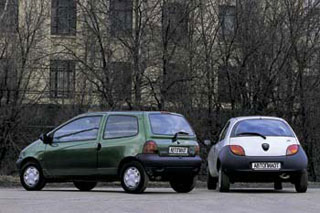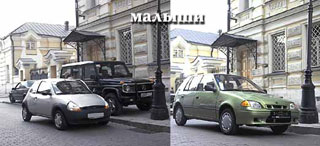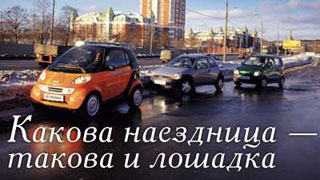Test drive Ford KA 1997 - 2008 hatchback
Size matters
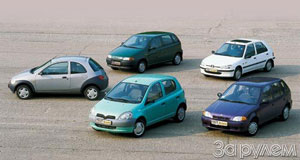 Even one who has never been abroad knows that in Europe there are full of small, compact cars. In Russia, the opposite is true.
Even one who has never been abroad knows that in Europe there are full of small, compact cars. In Russia, the opposite is true. There are almost no babies on the streets of the capital, and among the foreign foreign cars of the class B car, that is, 3.5-3.9 m long, make up an insignificant share.
What is a mentality?
Folk rumor does not recognize a full -fledged foreign car that that is smaller than Samara or cannot overtake it. Therefore, the purchase of such a car looks new. Imagine: Ukrainian Tavria is now more expensive than front -wheel drive vases, about the price of real foreign cars, even the smallest and cheapest ones, nothing to say.
And yet they are bought. The impromptu survey of dealers showed that the majority of customers of such machines are far from poor, and such a car is almost never the first in the family. Just buying a second (or third) full-sized car is either financially unbearable, or inappropriate, or even just want something likely. The most common situation is the acquisition of a car to a wife or an adult daughter in cases where either the reliability and comfort of domestic equipment does not suit, or the situation obliges. It is less common that an independent business woman is transplanted to a foreign car with Samara or Lada. But one way or another, we have a small car is certainly associated with a woman while driving, although in fact this is not always the case.
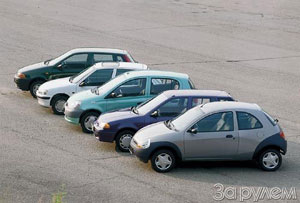
This is not Europe for you!
Formally, the choice of small cars is wide, however, living cars at dealers clearly demonstrate the level of demand. For example, we could not find Nissan Mikra, despite the fact that it will not be difficult to find Almer. As a result of the search, the next five developed:
Toyota Yaris: engine - 998 cm, distributed injection, 4 cylinders, 16 valves, intake phases, 50 kW/68 hp, is produced since 1999;
Ford KA: engine - 1299 cm, central injection, 4 cylinders, 8 valves, lower location of the camshaft, 44 kW/60 hp, is produced since 1997;
PEUGEOT 106: engine - 1124 cm, central injection, 4 cylinders, 8 valves, 44 kW/60 hp, is produced since 1991, modernized in 1996;
Fiat Punto-55: engine-1108 cm, central injection, 4 cylinders, 8 valves, 40 kW/54 hp, is produced since 1993;
Suzuki SWIFT: engine - 993 cm, central injection, 3 cylinders, 6 valves, 39 kW/53 hp, has been produced since 1983, the last modernization in 1996 in 1996
Similar and different
Despite similar dimensions, cars differ significantly outwardly. Yaris looks the largest, but in fact it is only wider and higher than rivals. Together with the Ford, they form a bright type of toy car, while everyone else has a more stringent appearance. The Fiat Punto, which became a 1994 car, at one time looked very fashionable, but over the years his appearance faded, while the more conservative design of Peugeot 106 is not so susceptible to time. The long-liver Suzuki Swift, although updated three years ago, has really little changed since the birth. In Europe, it seems completely archaic, although on our streets it will completely go beyond the new product.
Little - then is it cramped?
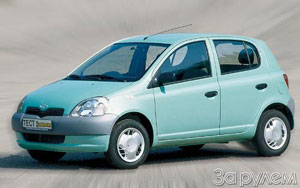 Such judgments had grounds, but the art of layout has recently reached such heights that it is just right to doubt the obvious.
Such judgments had grounds, but the art of layout has recently reached such heights that it is just right to doubt the obvious. Inside Toyota-Yaris, four are freely located, even if they play for the volleyball team. Five will still be cramped - there is not enough width of the salon. The Fiat Punto inside is only slightly smaller, but at least with VAZ 2109, which is almost 25 cm longer, it cannot be compared. Here is the longitudinal adjustment of the driver's seat for any growth, and there is enough space above your head, and, importantly, it is convenient to sit. The rest of the cars are not so spacious, although also not cramped. Peugeot is impressive in length adjustment, but the roof is low, and there are few places for the legs of the rear passengers, although the interior is as long as the punto. The secret of the Italian in a more vertical landing. In the three-door Ford-ka, comfortable passengers are comfortable, and at the back you can only sit together, and then if the driver and front passenger are small in stature. Susuki Swift with modest sizes easily holds five, although it is again better to plant not too high. In addition, the rear seat pillow is too short to withstand a long journey on it.
The luggage compartments for all machines are small, and Ford is very narrowed with lanterns, and in Suzuki the high threshold makes it difficult to load heavy things.
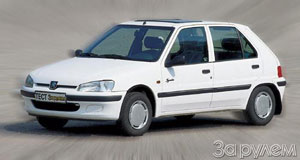 Only Yaris has a sliding rear seat, which allows you to give preference to either baggage or legs. However, with a folded rear seat in any of the kids, you can easily transport a large TV or another voluminous, but not a heavy luggage.
Only Yaris has a sliding rear seat, which allows you to give preference to either baggage or legs. However, with a folded rear seat in any of the kids, you can easily transport a large TV or another voluminous, but not a heavy luggage. The feeling of a large car
It is not always directly related to the size. It has many components: the visual spaciousness of the salon, the smoothness of the course, the level of noise and vibration, the feeling of driving and so on ... motorists operate with two concepts - limousine or canning bank, and in their judgment there is rude logic. In accordance with it, our five can be placed by solidity in this order: Ford Ka, Toyota Yaris, Fiat Punto, Peugeot 106, Suzuki Swift. However, outsiders have their excuses: the feeling of a large car implies a certain imposition, a slightly slow reaction, and Swift, and especially Peugeot, instantly respond to the most sharp actions of the driver. Although, speaking impartially, they have the most vocal motors, and the upholstery panels are not quite silent.
Slow and low -power
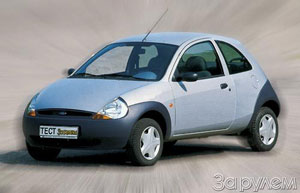 This statement is debatable, although it is difficult to wait for the miracles of the dynamics from motors of 1-1.1 liters. Ford ka is only an apparent exception: the design of its engine is very archaic, and with a larger volume (1.3 l), it does not stand out with power. However, for machines of small mass, the lack of power is not so noticeable. Suzuki turned out to be the easiest of the five - only 788 kg of equipped mass, the heaviest - Yaris pulled exactly a hundred more. However, having the most powerful engine, he easily furnished the rest of the cars in acceleration, not excluding the nimble Peugeot: with a minimum march, he won the fastest title, but accelerated not so briskly. Contrary to expectations, the most painful motor was at Fiat - he was the first to accelerate without switching gears. Despite the solid volume of the engine, Ford ceded in the acceleration and maximum speed to the weak (!) - Suzuki Swift. The latter turned out to be the only car equipped with air conditioning, and we were very surprised to learn how much it affects the dynamics of overclocking. But this is a topic for a separate detailed conversation.
This statement is debatable, although it is difficult to wait for the miracles of the dynamics from motors of 1-1.1 liters. Ford ka is only an apparent exception: the design of its engine is very archaic, and with a larger volume (1.3 l), it does not stand out with power. However, for machines of small mass, the lack of power is not so noticeable. Suzuki turned out to be the easiest of the five - only 788 kg of equipped mass, the heaviest - Yaris pulled exactly a hundred more. However, having the most powerful engine, he easily furnished the rest of the cars in acceleration, not excluding the nimble Peugeot: with a minimum march, he won the fastest title, but accelerated not so briskly. Contrary to expectations, the most painful motor was at Fiat - he was the first to accelerate without switching gears. Despite the solid volume of the engine, Ford ceded in the acceleration and maximum speed to the weak (!) - Suzuki Swift. The latter turned out to be the only car equipped with air conditioning, and we were very surprised to learn how much it affects the dynamics of overclocking. But this is a topic for a separate detailed conversation. The clear lag of Ford-ka could also be explained by the selection of gear rates, because Ford's fifth gear goes to the stratosphere is suitable only for a leisurely ride along the highway. However, other cars had very stretched gearboxes.
The measurement results interested us so much that we decided to check them using the dino-V.311 device. Its accuracy is not very high, but sufficient to build a real external speed characteristic of the engine without a stand with treadmills, and even more so without removing the motor from the machine. The results speak for themselves: Ford did not reach the declared indicators, Peugeot turned out to be much more powerful than according to the passport, and Fiat issued the most smooth characteristic of the torque.
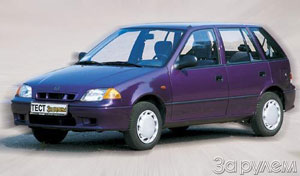 They are bought to save
They are bought to save It is not true, especially in our country, where everyone is sure that 10 liters of the 76th per hundred are better than 7 liters of AI-95. Nevertheless, among our five there were at least two cars unique in terms of economy: Toyota Yaris and Suzuki Swift. If you believe the side comprehensive compliance of the first, with uniform movement at a speed of 80 km/h, fuel consumption is only 3.6-3.9 l/100 km. We could not interfere in the fuel systems of commodity machines with flow meters, but it turned out to be a good comprehensive assessment of economy: after all, all cars drove the same distance, including the city, highway, special roads, accelerations to maximum speed and leisurely crossings from place to place. Given the small range of the distance, it turned out: Toyota and Suzuki spend 5-5.5 l/100 km, Punto-5.5-6 liters,
Peugeot - 6.5-7 l, Ford - 7.5-8 l/100 km. All cars, with the exception of Suzuki, are designed for AI-95, however, in extreme cases, they can also be content with unhealthy AI-92. If the Ford and Peugeot indicators can hardly be called outstanding, then the leaders are clearly more economical than any domestic car, not excluding the Oka.
Little means unstable?
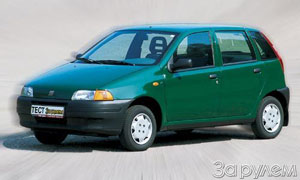 That's not. Any of the cars completely confidently behaves at maximum speed, despite the lateral wind or uneven coating. In turns, the situation is changing.
That's not. Any of the cars completely confidently behaves at maximum speed, despite the lateral wind or uneven coating. In turns, the situation is changing. We are most predicting the fiat-punto-it is not scary to overdo it a little bit at the entrance to the turn. The car itself will extinguish an excess of speed with a lateral gliding - there was enough width of the road. However, many will not like his inconvenient and slow steering wheel.
PEUGEOT 106 is much sharper and more interesting in management: his steering wheel talks about all the details of the road, but in a critical situation, it requires a quick and correct reaction from the driver. Otherwise, complications are possible - the playfulness of this machine is quite capable of provoking a not too experienced driver to go beyond his capabilities.
Ford ka with a powerful hydraulic wrap allows you to easily keep the road and reacts vividly to the driver’s actions, but for lovers to scream with tires, he is not a gift. Ford has the demolition of the front wheels too early. Of all the cars here, they account for the greatest share of mass.
Suzuki Swift is pretty hard in corners, but this does not prevent him from clearly fulfilling the wishes of the driver. The reactions of the car are quite fast to satisfy fans of active driving, and smooth enough to allow the boundaries of its capabilities without unnecessary excitement.
Toyota Yaris is very confident in turns - only until a certain (by the way, very high) limit is crossed. Behind him is a sharp breakdown in a skid, pulling out a car from which is very difficult. Hardly one of the buyers of this car will out of their own free will reach a similar regime, but everything is possible on the road.
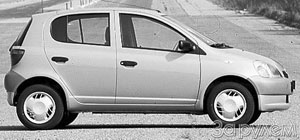 Toyota Yaris
Toyota Yaris + A spacious transformable interior, good dynamics, excellent brakes, outstanding efficiency, ABS and hydraulic power steering in the basic configuration, high quality manufacturing.
- High price, expensive service, mediocre handling in marginal modes.
PEUGEOT 106
+ Excellent handling, good dynamics, powerful engine, attractive price.
- The small height of the cabin, a noisy engine, average economy, hard suspension, brakes are prone to overheating.
Fiat Punto-55
+ Good controllability, a painful economical motor, moderate price, spacious interior, affordable service.
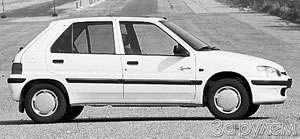 - hard short -flowing suspension, mediocre quality of color, small selection of additional equipment.
- hard short -flowing suspension, mediocre quality of color, small selection of additional equipment. Ford ka
+ Fashionable appearance, a large selection of additional equipment, a comfortable suspension, a quiet engine.
- High price, mediocre economy and dynamics, uncomfortable trunk, expensive service.
External speed characteristics of engines
Peugeot 106: Dynomet v.311:
50.1 kW/68 l. With. at 5950 rpm;
87 N.M at 3800 rpm;
stated: 44 kW/60 l. With. at 6200 rpm 88 N.M at 3800 rpm
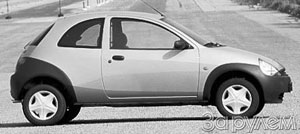 Fiat Punto-55: Dynomet v.311:
Fiat Punto-55: Dynomet v.311: 50.0 kW/68 l. With. at 5490 rpm;
90 N.M at 4370 rpm;
stated: 40 kW/54 l. With. at 5500 rpm 86 N.M at 3250 rpm
Suzuki Swift: Dynomet v.311:
39.1 kW/53 l. With. at 5470 rpm;
78 N.M at 3760 rpm;
stated: 39 kW/53 l. With. at 5700 rpm 76 N.M at 3300 rpm
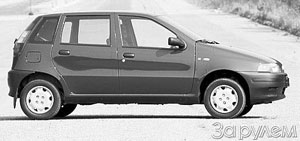 Toyota Yaris: Dynomet v.311:
Toyota Yaris: Dynomet v.311: 52.9 kW/72 l. With. at 5540 rpm;
95 N.M at 4090 rpm;
stated: 50 kW/68 l. With. at 6000 rpm 90 N.M at 4100 rpm
Ford Ka: Dynomet v.311:
41.2 kW/56 l. With. at 4850 rpm;
87 N.M at 3950 rpm;
stated: 44 kW/60 l. With. at 5000 rpm 103 N.M at 2500 rpm
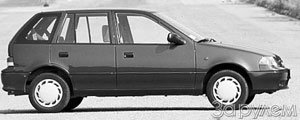 Suzuki Swift
Suzuki Swift + Outstanding efficiency, undemanding to gasoline (except for ethyled), comfortable and energy -intensive suspension, good color quality, high selection of additional equipment, good handling.
- An unmade design, an uncomfortable rear seat, a small opening and a high trunk threshold, a noisy engine, a creak of the shelf of the trunk.
SUMMARY
Toyota Yaris is a machine worthy of the 21st century.
PEUGEOT 106 - with a modest motor is able to give a lot of pleasure.
Fiat Punto - Italian design plus a spacious interior and a painful motor.
Suzuki SWIFT - the outstanding economical car of the 80s has good chances to survive until the next century.
Ford Ka - his design drives many crazy. More and not required.
Which of the five will be the most sympathetic to domestic consumers, it is not easy to answer - at least until there is no real competition on the market and compatriots are forced to choose the car not to taste, but according to a pocket.
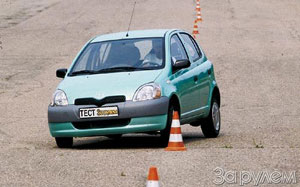
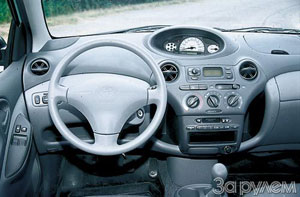
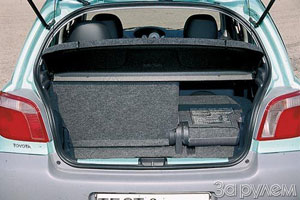
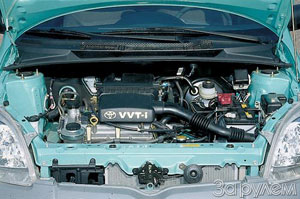
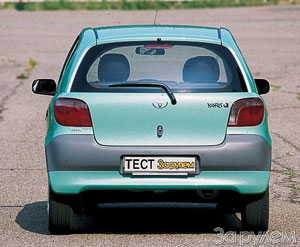
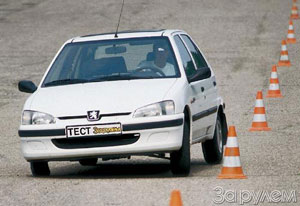
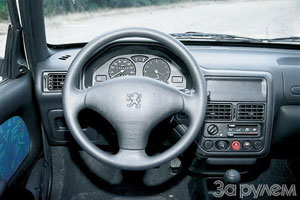
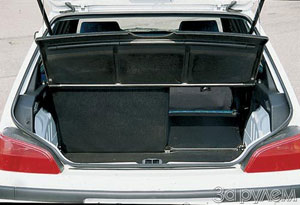
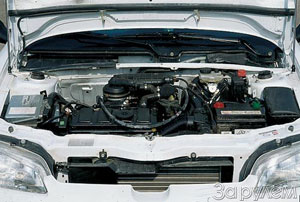
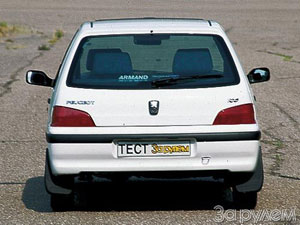
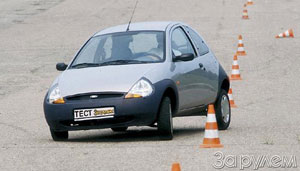
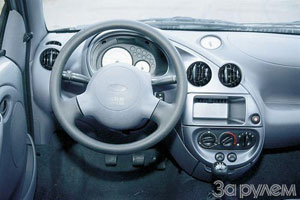
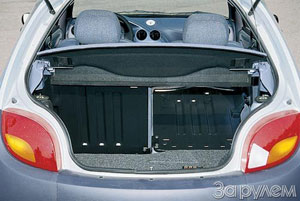
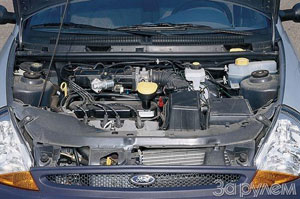
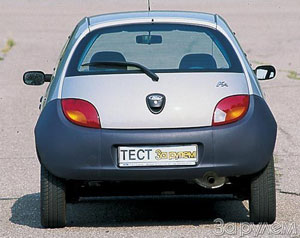
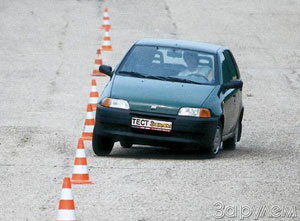
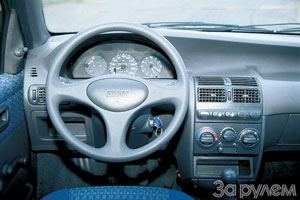
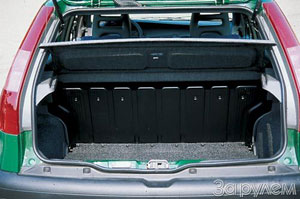
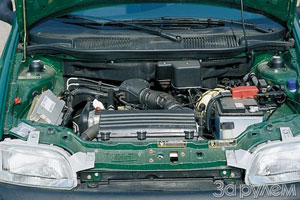
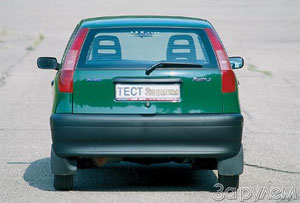
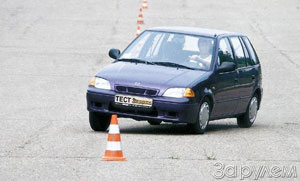
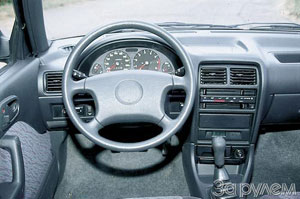
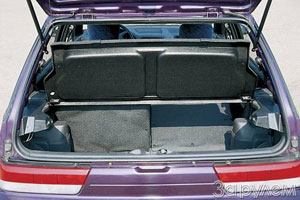
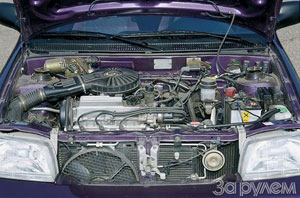
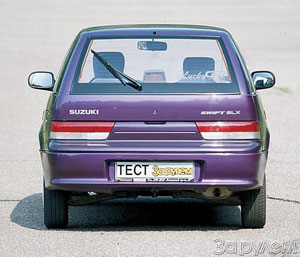
Anatoly Fomin. Photo by Vladimir Knyazev
Source: The magazine "Driving"
Video crash tests Ford KA 1997 - 2008
Test drives Ford KA 1997 - 2008
Crash Test Ford KA 1997 - 2008
Krassh Test: Detailed Information17%
Driver and passengers
9%
Pedestrians







